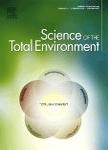版权所有:内蒙古大学图书馆 技术提供:维普资讯• 智图
内蒙古自治区呼和浩特市赛罕区大学西街235号 邮编: 010021

作者机构:Univ New Hampshire Dept Civil & Environm Engn Durham NH 03824 USA Univ Maine Dept Wildlife Fisheries & Conservat Biol Orono ME USA Univ Maine Senator George J Mitchell Ctr Sustainabil Solut Orono ME USA US Geol Survey Maine Cooperat Fish & Wildlife Res Unit Orono ME USA
出 版 物:《SCIENCE OF THE TOTAL ENVIRONMENT》 (整体环境科学)
年 卷 期:2019年第669卷
页 面:833-843页
核心收录:
学科分类:0830[工学-环境科学与工程(可授工学、理学、农学学位)] 08[工学]
基 金:National Science Foundation's support via the Research Infrastructure Improvement Award (NSF) [IIA-1539071] U.S. Geological Survey Maine Cooperative Fish and Wildlife Research Unit
主 题:System dynamics modeling Energy-fish tradeoffs Hydropower generation Turbine shutdown Fishway installation Dam removal
摘 要:Management activities to restore endangered fish species, such as dam removals, fishway installations, and periodic turbine shutdowns, usually decrease hydropower generation capacities at dams. Quantitative analysis of the tradeoffs between energy production and fish population recovery related to dam decision-making is still lacking. In this study, an integrated hydropower generation and age-structured fish population model was developed using a system dynamics modeling method to assess basin-scale energy-fish tradeoffs under eight dam management scenarios. This model ran across 150 years on a daily time step, applied to five hydroelectric dams located in the main stem of the Penobscot River, Maine. We used alewife (Alosa pseudoharengus) to be representative of the local diadromous fish populations to link projected hydropower production with theoretical influences on migratory fish populations on the model river system. Our results show that while the five dams can produce around 427 GWh/year of energy, without fishway installations they would contribute to a 90% reduction in the alewife spawner abundance. The effectiveness of fishway installations is largely influenced by the size of reopened habitat areas and the actual passage rate of the fishways. Homing to natal habitat has an insignificant effect on the growth of the simulated spawner abundance. Operating turbine shutdowns during alewives peak downstream migration periods, in addition to other dam management strategies, can effectively increase the spawner abundance by 480-550% while also preserving 65% of the hydropower generation capacity. These data demonstrate that in a river system where active hydropower dams operate, a combination of dam management strategies at the basin scale can best balance the tradeoff between energy production and the potential for migratory fish population recovery. (C) 2019 Elsevier B.V. All rights reserved.